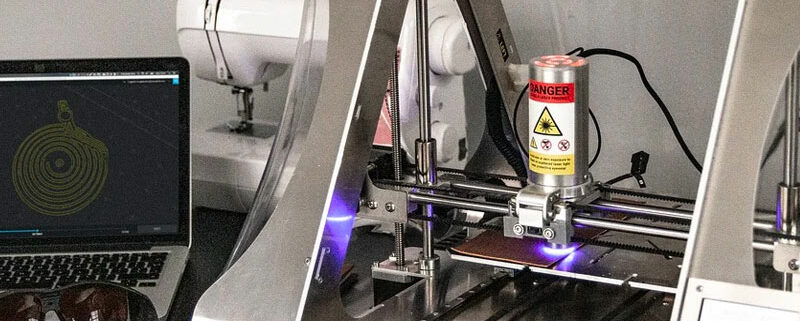Innovative technologies: How we’ve used 3D printing
In this latest blog post, we spoke to Robertas Andriulis, Technical Manager at Roberts Metal Packaging, about the latest innovative technologies and how the engineering team are using 3D printing.
Q: Robertas, please introduce the engineering team.
Robertas: Our role is to ensure that the manufacturing line continues running smoothly and efficiently, delivering products including metal containers, screwcaps and closures to customers on time. The Robert’s engineering team is made up of about 18 full-time and part-time members, including an electrician and three engineers.
The engineers and technicians are responsible for setting the machines, that is programming them ready to produce whichever product we are making that day, and also sorting out any problems with those machines when they arise – whether that’s fixing broken parts or troubleshooting to find the issue.
Q: How has the team been affected by Covid-19?
Robertas: Obviously all the teams at Roberts have been affected by Covid-19 but I’m pleased to say that we’ve not had any staff members directly impacted by the pandemic.
We implemented measures early on so that we were able to continue production throughout lockdown by spacing out team members on machinery, providing all necessary PPE and all staff who could work from home did so immediately. For the engineering team, some of us can operate from home, like me, and others work in shifts.
Q: We’ve recently made new investments in the engineering department; what benefits have these brought?
Robertas: In March, we installed a new 3D printer which manufactures objects out of plastic in three dimensions. We’ve recently made this investment because the technology is now incredibly accurate which is important for our requirements, which are two-fold.
Firstly, we can quickly and easily create mockups of products for customers who are looking at new packaging formats. For example, we recently printed a 3D screwcap with slightly different depth and height measurements for a customer so they could see what it might look like on their branded bottles before committing to full scale production. Using the 3D printer is quicker, reduces the amount of raw materials used to create a mockup and is more cost effective than making a sample by hand.
Secondly, we’re also able print small spare parts and equipment needed to fix our own manufacturing machinery such as nozzles, jigs, gauges and pneumatic cylinders. Before the 3D printer, these parts were either made by our team in house by hand out of tinplate or we’d need to order a new part from a supplier. I recently investigated the cost of using plastic nozzles as spare parts and it was almost three times the amount it would cost for us to 3D print our own.
The 3D printer has allowed us to repair machinery on the same day as a breakdown, because we are able to print the part we need within a matter of hours – ensuring the production line is back up and running as soon as possible. That’s important because it minimises any delays on delivery!
Due to the coronavirus pandemic the 3D printer has been running almost 24/7 because we’ve also been able to produce parts that have been unavailable from our normal supply chain. For example, the wadding machine which inserts the plastic seals into our caps using fixtures made on the 3D printer, ensuring a steady supply of our products for customers whatever the pandemic has thrown at us!
Q: What else has the team been working on?
Robertas: As well as setting machinery and running repairs, we also build our own equipment because the kind of specialist machinery we require is not made elsewhere.
Last year we built a thread rolling machine which produces the ‘bead’, the rolled edge, or the ‘knurl’, the corkscrew grooves, on a screwcap or closure. Effectively the thread rolling machine ensures that each screwcap or closure has a safe edge for customers to use.
It can take up to a year to make one machine from scratch. The first one has been in production a year and we are working on a second to enter the manufacturing line in the summer. It is a difficult job to do and you must have a precise set of skills to be able to build such a machine – it’s like extreme Lego!
Q: How do you develop the skills to build machinery like this?
Robertas: These skills take years to learn. It can be difficult to find the right people to join our engineering team and often we train new starters from scratch.
After an initial induction, they’ll spend three months shadowing an engineer or technician who will show them how to set up machines and diagnose problems. After this, it probably takes up to two years to be fully equipped to handle the entire production line.
At this point, each new technician or engineer will pass an exam on every type of machine. A senior member of the Roberts engineering team will test the entrant on all the different safety issues, problems and methodology. Candidates must show a thorough understanding to past the test, otherwise they are sent back to their original trainers for an update, before they can retake the exam.
And lastly, when candidates are ready, they are sent to undergo a power press certification – a day’s course which ends with an exam.
It takes a lot of commitment and enthusiasm to develop all the necessary skills, but it’s a very rewarding role – being able to build our own machinery, make bespoke tooling or stamps and diagnose repairs single-handedly is an empowering feeling.


